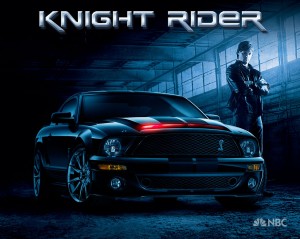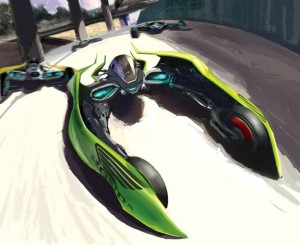My dad is a US patent examiner and he mainly works with companies like Honda, Toyota, and Mazda when they submit patents for things such as electro-hydraulic power steering. As a result, his vast knowledge of cars has rubbed off on me quite a bit since he often takes me along to different car shows and to one of the BMW factories in North Carolina. Anyways, seeing the concept cars in today’s powerpoint really interested me.

Promo Picture for the new version of Knight Rider
Immediately, I thought of the KITT (Knight Industries Two/Three Thousand) car in the show Knight Rider. It is fully equiped with the latest forms of nanotechnology: a molecular bonded shell that protects the car from bullets and explosives, pyroclastic lamination which makes the paint thermal resistant to up to 800 degrees F and a medical scanner that includes an electrocardiograph (ECG) much like the one we saw in the video clip earlier.

Honda Great Racer 2025
Another vehicle that I immediately thought of was the Honda Great Race. It is designed to go around the entire world in 24 hours on land, air, or water. The shape of it is much like that of a podracer from Star Wars. Uniquely, it was sonar and echolocation sensors located all over to detect speed, terrain, and altitude in order to switch configurations from car to boat to plane.
Although nanotechnology is allowing scientists and engineers to make these concept cars actually work, the probability that they will be available to the masses is very unlikely. The cost to make these cars are very great, making it difficult for people to obtain them. The futuristic and avant-garde shape and design of the cars may not suit many peoples’ tastes. Instead, luxury car companies such as Mercedes Benz or BMW will add a few cool, subtle features to the cars that they actually sell, such as having the headlights be able to move up and down and right and left to go along with the hills and curves of the road you are driving on.

A Mercedes concept car